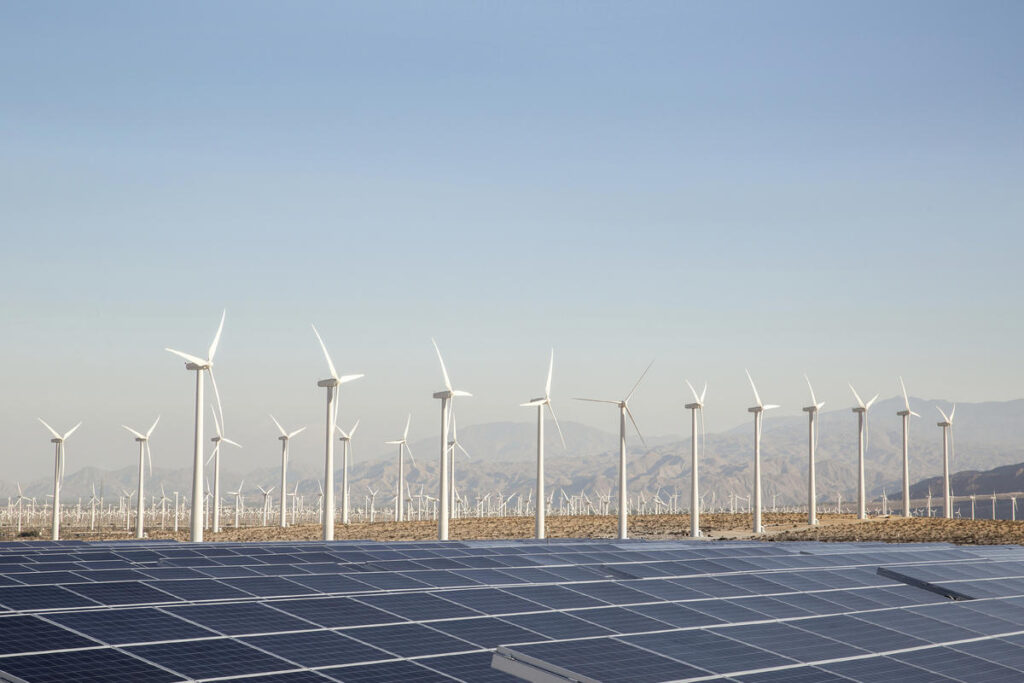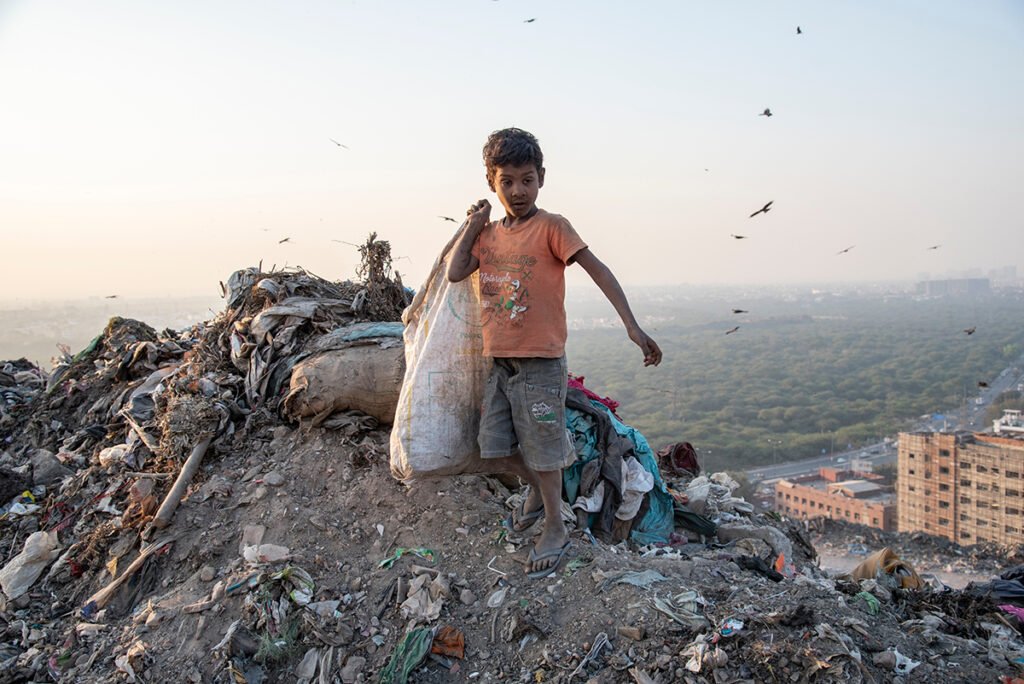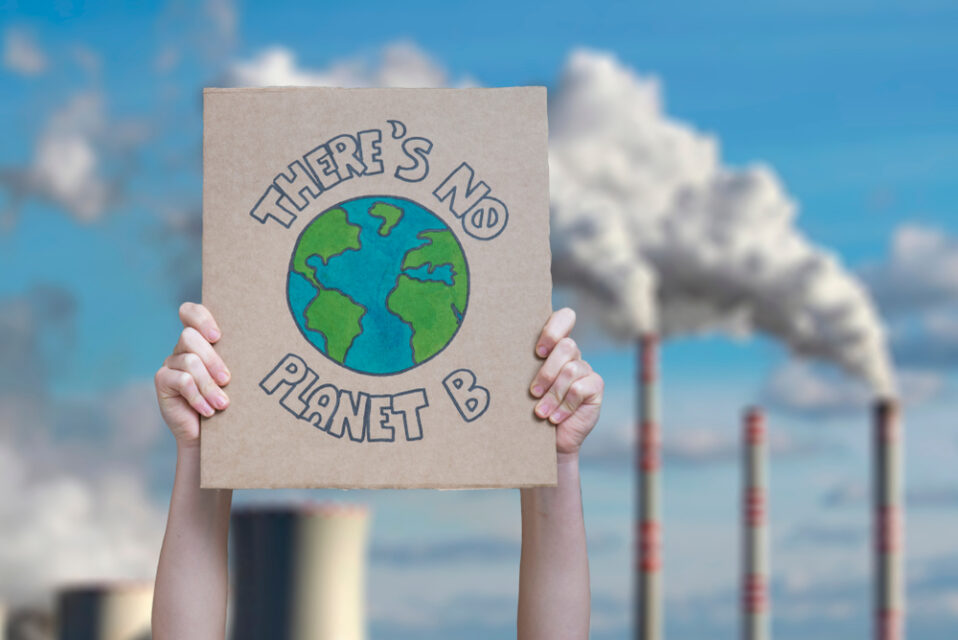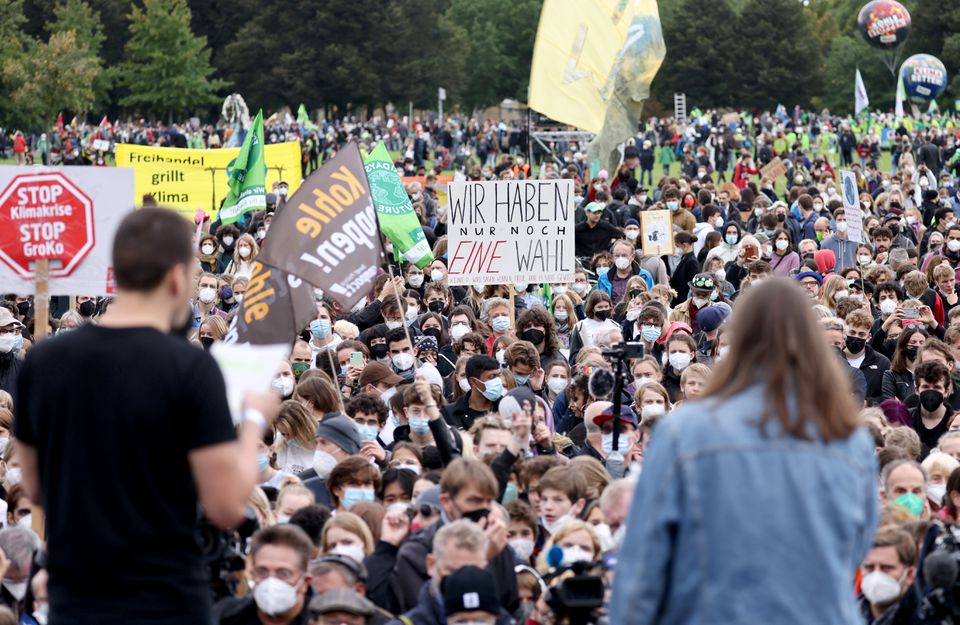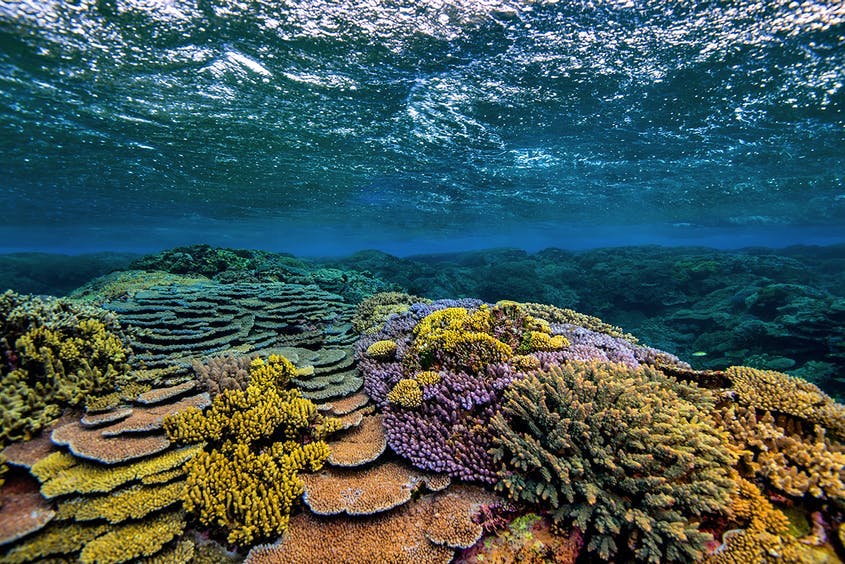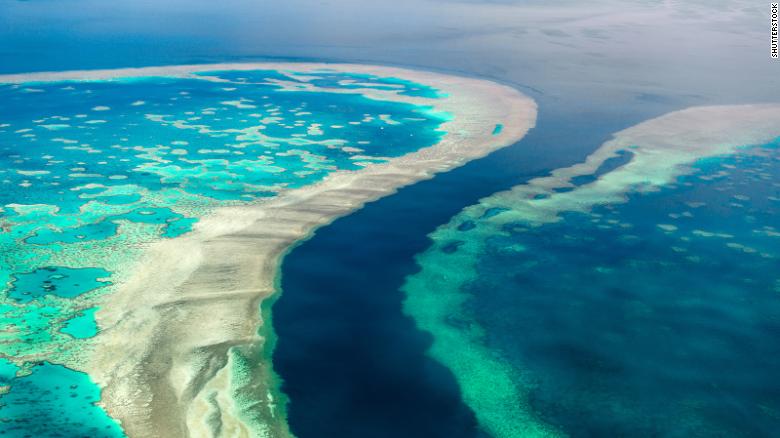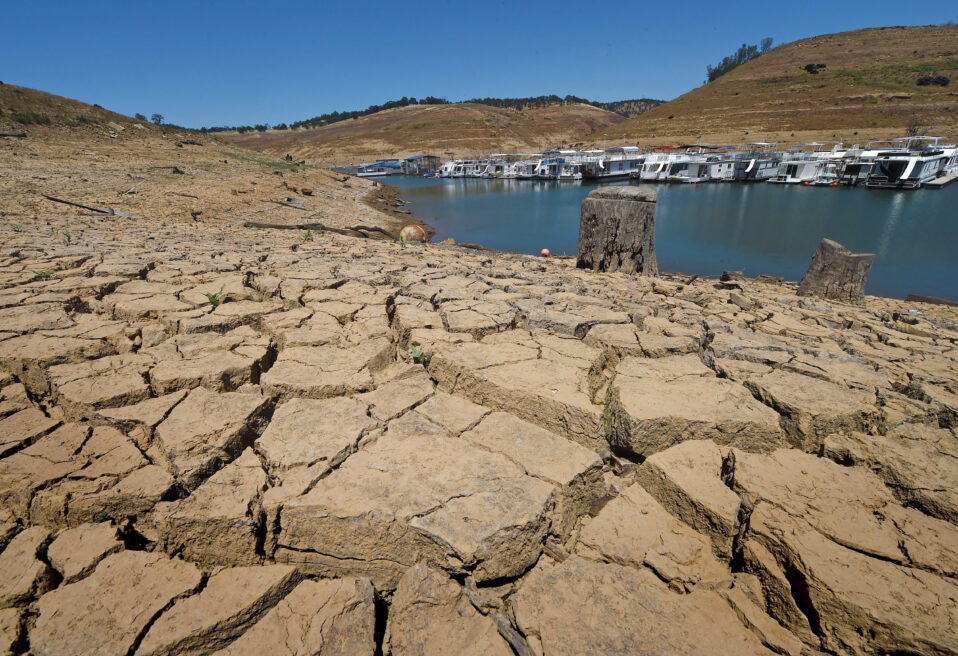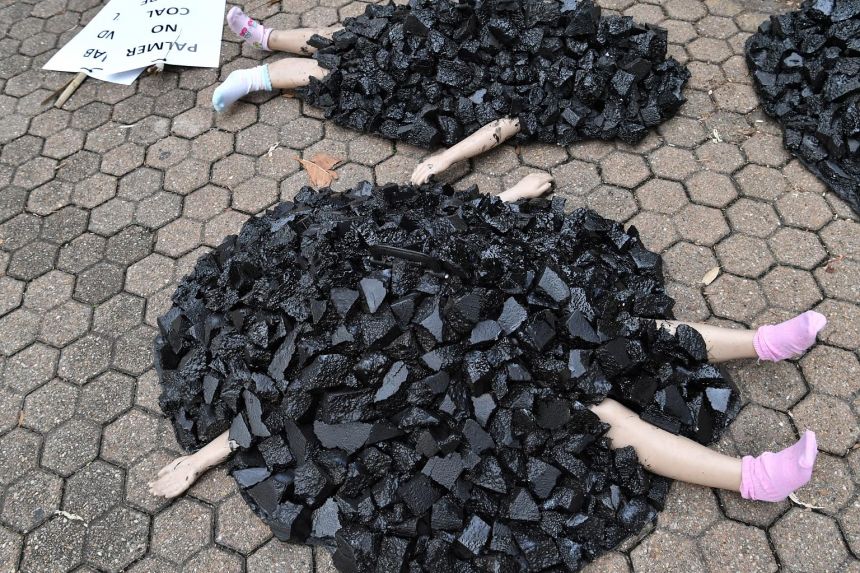The 30 or so golf courses in the Salt Lake County of Utah drink up around nine million gallons of water a day to stay pristine green – that’s more than 13 Olympic-sized swimming pools, CNN reports.
Managing the turf on golf courses also means using carbon-intensive fertilizers, plenty of mowing and, in many cases, clearing forests or trees that were soaking up carbon-dioxide to make way for long tracts of the fairway. In other words, golf is a dirty sport that’s wrecking the planet. But it doesn’t have to be.
The impact of golf on the climate and environment has led to growing calls to make the sport more sustainable – even to play on bone-dry courses, as golfing legend Tiger Woods has enjoyed. And it’s not just to save the planet, but to save the sport itself, as the climate crisis threatens to transform many courses into muddy swamps.
The president of the American Society of Golf Course Architects (ASGCA), Jason Straka, told how the climate crisis has been affecting golf in flood-threatened Florida, and in Ohio and Utah, which have been hit by warmer-than-usual weather and even drought.
“Clubs never used to have to close after two-inch rain, now they do. They also experience sunny day flooding,” said Straka. In Miami, authorities are raising public drains to a minimum of 3.4 feet, but more than 50% of courses in the city are under this minimum, which rings alarm bells for Straka.
“If they don’t go out and literally lift their footprint up in the air, they’re going to be in a perpetually deeper and deeper bathtub,” he said. “If they think they have problems now, in 10 years, they’re going to be a swamp.”
But change will equate to cost, which is where golf’s critics find their voice once more: courses are just not sustainable anymore.
While courses in the eastern US are being threatened by changing rainfall patterns, deadly wildfires that ripped through the west, including in California, have led to poor air quality and course closures in recent years. Less stark, but by no means less worrying, are rising temperatures in Ohio, which are being infested with Bermuda grass, a warmer-season grass that can be difficult to control.
Rain, fire, floods and ice

The situation in Australia is similar: Lynwood Country Club, northwest of Sydney, was flooded in 2020 and again earlier this year. At one stage, parts of the course were over 26 feet under water, while up the New South Wales coastline, Nambucca Heads received 42.5 inches of rainfall in just eight days.
On the same eastern coast, some 350 miles south of Sydney in the state of Victoria, Mallacoota Golf Club very nearly perished during the bushfires of 2019 and 2020, the fairways providing a sanctuary for townsfolk. Club Catalina, further up the NSW coast, broke the firewall that threatened to wipe out the town.
But in a country accustomed to regular wildfires, courses are adapting by trying to capture water when rain is heavy for use in course irrigation, or even to put out fires.
“Golf courses in Australia, by and large, all have some sort of irrigation storage which are very useful for fighting fires,” Society of Australian Golf Course Architects (SAGCA) President Harley Kruse told CNN Sport, echoing Straka’s comments on future forecasts.
“Last year in Sydney, there was a 1-in-100-years flood event. We’re going to get an increase of various storm events which could be wind, rain, cyclone or we get a greater increase in drought events. Golf courses need to be flexible and more understanding.”
Fellow Australian Tim Lobb, President of the European Institute of Golf Course Architects (EIGCA), is promoting naturalization and grass reduction in Turkey to decrease water usage – 15-20% of the area that was fine turf will use a lower-maintenance grass species.
In cooler regions, coastal courses around the British Isles face a very uncertain future – none more so than the world’s fifth-oldest layout in Montrose, a few miles up the coast from major championship venue Carnoustie, where in the last 30 years, the sea has encroached by almost 230 feet (70 meters) in places, according to research released in 2016.
With sea levels projected to rise by one meter in the next 50 years, the home of golf at St. Andrews in Scotland could be a swamp like Miami as early as 2050.
Over in Iceland, Edwin Roald, renowned Icelandic architect and founder of Eureka Golf – a company “committed to mitigating climate change through golf” – told CNN how greater frequency of water freezing and thawing cycles in colder Northern Hemisphere climates is becoming a real danger to courses.
“We have a lot of issues with frozen water […] and a lot of flash flooding, repeatedly throughout the winter. It’s allowing that to happen without the water eroding the land.
“Winter kill, through the turf’s suffocation under ice cover, is a greater threat and increasing. This causes financial damage to courses that are opening in spring with dead turf.”
Solar panels and robotic mowers

At the COP26 summit in the Scottish city of Glasgow, the North Berwick-based environmentalist GEO Foundation for Sustainable Golf showed a virtual audience how golf is learning to be a champion among sporting bodies for a greener planet.
Woburn, the host course for the 2019 Women’s British Open, constructed its own reservoir in 2013 to capture rainwater to irrigate its turf and more recently drilled a borehole to tap water from underground. The company managing the course says the new infrastructure should make Woburn fully self-sufficient, so it isn’t using water that could be otherwise used for drinking and in homes.
While at Remuera Golf Club in Auckland, carbon-dioxide (CO2) emissions were reduced by nearly 25 tons from 2018-19, through the cutting of all electricity use at the club.
Finland’s Hirsala Golf aims to have 40 robotic mowers running on electricity that can be sourced from renewable sources by 2022, cutting the usage of 1,000 liters of diesel fuel, while solar panels at Golf de Payerne in Switzerland have saved 1,080 tons of CO2.
Back in Iceland, the country is measuring the carbon status of all of its 65 golf courses through the Carbon Par project – the first golfing nation to produce such an account.
“The method that is being used to produce this estimate, hopefully, others can use that going forward. To improve, you first have to know where you stand,” said Roald.
“Golf courses are sequestering a considerable amount of carbon, which I think few people actually associate with golf. On the flipside, golf is a large land user and is bound to be using wetlands in places. Emissions, when you drain wetlands, are so great.”
Forests, peatlands, deserts and tundra can all absorb and hold stocks of CO2. Of all the carbon held in land-based ecosystems, around 34% can be found in grasslands, data from the World Resources Institute shows. That’s not much less than the 39% held in forests. So whether a golf course might actually soak up a good amount of carbon-dioxide depends on how it’s managed and whether it destroys more valuable land to begin with.
Roald added: “It’s only a matter of time before the golf industry will be asked questions about what we can do with those wetlands – that’s where we can have the most impact.”
Climate change clamor has caught the eye of one of golf’s most recognizable voices in Rory McIlroy, just one of many high-profile athletes who travel enormous distances by plane.
“I wouldn’t self-profess to be an eco-warrior, but I’m someone that doesn’t want to damage the environment,” the Florida-based Northern Irishman told the media at the DP World Tour Championship in Dubai.
“I live in a part of the world where hurricanes are very prevalent and becoming more and more prevalent as the years go on. I think we can all play our part in some way or another.
“We play on big pieces of land that take up a lot of water and a lot of other things that could maybe be put to better use.”
‘The way golf should be played’

Ahead of a trip to the world-renowned Royal Melbourne in Australia, Kruse referenced comments in 2019 by Tiger Woods and Ernie Els at the Presidents Cup.
Cutting to the chase, both players spoke highly of the course’s natural setup — in essence, much like many past Open Championships, the course was dry and vast areas of the rough and even fairways had gone without water, “letting Mother Nature dish up the elements to play the game,” said Kruse.
Well-watered and manicured golf courses can often provide softer conditions that produce better scoring and prettier TV images, but Els and Woods took the chance to laud another approach that will become the norm as courses seek sustainable practices.
Els and Woods both talked up the advantages of playing on a dried-out course, like in Australia.
Kruse said he could barely believe his eyes when he saw a team of maintenance staff on TV earlier this year using petrol-driven leaf blowers to dry the rough, adding American courses probably have more sprinkler heads per golf course and water more area of turf compared to courses in, for example, Australia or the British Isles.
“Taking the drought in California a few years ago, I would hope that they haven’t gone back to their old ways and they’re having a rethink,” Kruse said.
“You don’t need 2,000 irrigation heads right from fence line to fence line to keep the course alive. You can let things dry out.”







